על הֲזָרָה ואִזרוח: הערבית והעברית בשילוט הדרכים בגליל
עאמר דהאמשה וליאורה ביגון
מאמר זה בוחן את הייצוג החזותי-לשוני של השפה הערבית ושל השפה העברית בשילוט הדרכים של מנגנוני השלטון הישראלי בחבל הגליל. לאור העובדה שהמרחב בישראל הוא תוצר של הבניה ממסדית-לאומית, ובמסגרת יחסי הכוחות של רוב-מיעוט המעצבים את התודעה הפוליטית, שלטי הדרכים משמשים מכשיר רב-עוצמה בידי המדינה להקניית ערכים תרבותיים, חברתיים ולאומיים לתושביה. שלטי הדרכים הם חלק מתהליך של ייצור הנוף הלשוני, וביכולתם להשפיע על הערכים, האמונות ודרכי החשיבה של המשתמשים במרחב. המאמר מציע סקירה שיטתית ראשונה מסוגה של היבטים שונים של השילוט: מיקומם וארגונם של השמות הערביים והעבריים על השלטים, הבולטות שלהם בנוף וסוגיית כתיבתם ותעתוקם.
ניתוח היבטים אלה של שילוט הדרכים בגליל חושף מדיניות רטורית הפועלת בשני כיוונים: מחד גיסא, השלטים יוצרים הדרה מרחבית של הזיכרון הפלסטיני בניסיון לאזרח את החברה הפלסטינית באמצעים לשוניים מניפולטיביים, שיביאו אותה לקבל את דימויי השלטון על חשבון המאגר הטופונימי העשיר שלה ולפתח קשר מטושטש ומעורפל לסביבה; ומאידך גיסא השלטים מנכיחים את זהותה של הלשון העברית ואת עולם הדימויים הנקשר אליה במטרה לתמוך בפרויקט הציוני, לחזק את התודעה האזורית של דוברי העברית ולפתח בקרבם תחושת שייכות וניכוס מרחבי. ואולם, כפי שאופייני למצבים קולוניאליים מורכבים, לעולם אין מדובר על יחסי כוחות חד-ממדיים בין החברה השולטת לחברה הנשלטת ובין המוענים לנמענים. תחת זאת, המאמר חושף את הפוטנציאל החתרני של הקריאות היומיומיות במרחב ושל המשא ומתן הדינמי בין הקבוצות המעורבות.


